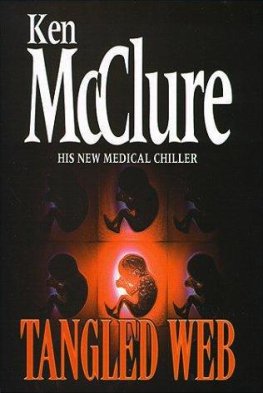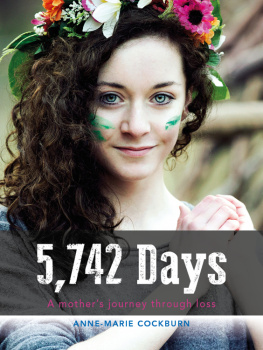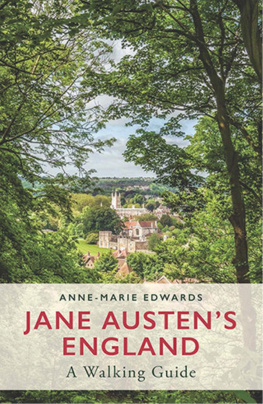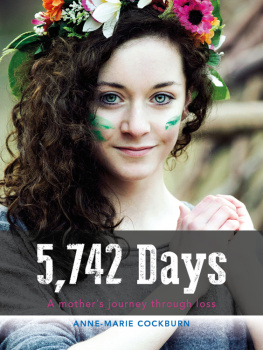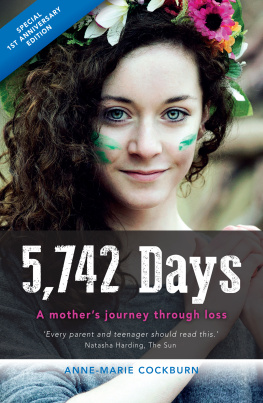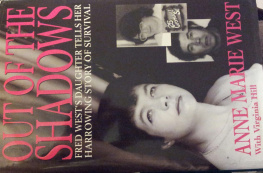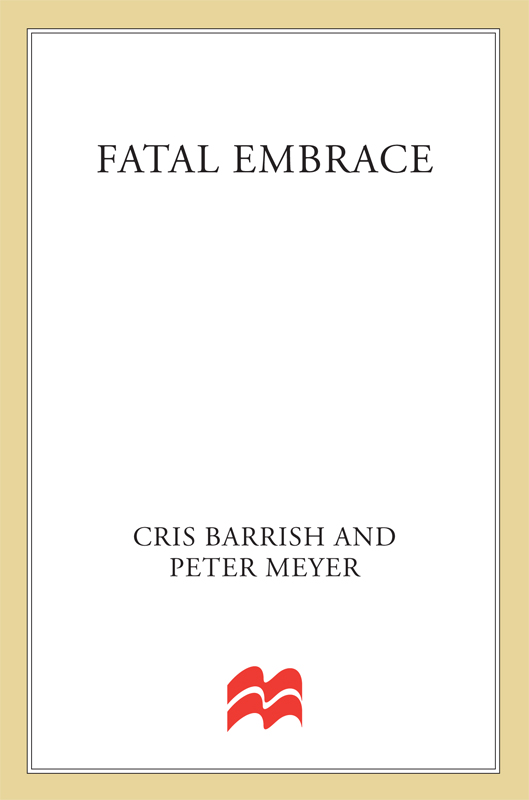
The author and publisher have provided this e-book to you for your personal use only. You may not make this e-book publicly available in any way. Copyright infringement is against the law. If you believe the copy of this e-book you are reading infringes on the authors copyright, please notify the publisher at: us.macmillanusa.com/piracy.
Contents
To the memory of
Anne Marie Sinead Fahey
Acknowledgments
I am indebted to dozens of people for their assistance, counsel, and support over the last three years while I was reporting this story as a staff writer for the Wilmington News Journal and writing this book with Peter Meyer.
At my newspaper I had the pleasure of collaborating with three fine reporters who at various times served as partners on the storyTerry Spencer, Valerie Helmbreck, and, especially, Jerry Hager. I want to also thank John Mura, the editor who initially assigned me to investigate the mystery of Anne Marie Faheys disappearance, in July of 1996, and who provided immeasurable inspiration and guidance; and his fellow editors Al Mascitti, E. J. Mitchell, and Merritt Wallick.
I would like to express my great appreciation to members of the Fahey familyespecially Robert, Kathleen, Brian, Mark, and Kevin, all of whom were gracious and accommodating, despite the loss of their sister, throughout this long ordeal.
I also appreciate the help of former assistant U.S. attorney Colm Connolly, the man most responsible for bringing Tom Capano to justice, who gave freely of his time and insight. Also, this project would not have been possible without the help of prosecutor Ferris Wharton; FBI agents Eric Alpert and Tim Munson; Wilmington police detective Bob Donovan; Delaware state trooper Mark Daniels; IRS agent Ron Poplos; Gov. Tom Carper; Delaware secretary of state Ed Freel; gubernatorial chief of staff Jeff Bullock; Superior Court judge William Swain Lee; Annies friends Kim Horstmann, Jackie Steinhoff, and Beth Barnes; former Wilmington mayors Bill McLaughlin and Tom Maloney; attorneys David Weiss, Dan Lyons, Katie Recker, Tom Bergstrom, Joseph Oteri, Mike Modica, Charles Butler, and Joe diGenova; juror Erin Reilly; and Ken Chubb, Ron Smith, Bud Freel, Kevin Freel, Michael Scanlan, Shaw Taylor, Kristi Pepper, Joe Smagala, Brian Murphy, Mike Harkins, Robert Long, Theresa Jordan, Heather Brand, Donna Rizzo, Loretta Farkas, Carol Vannicola, Kathi Carlozzi, Warren Trent, CynDee Royle, Natasha Lebedeva, and a host of sources who choose to remain anonymous. I owe you all.
Last, special thanks to Peter Meyer, a writer of immense talent who brought me on to his project; and to my lovely wife, Mary, and our precious little boy, Luke, for tolerating me while I spent fourteen hours a day shackled to a computer screen.
June 7, 1999
Cris Barrish
I recall my amazement, surveying the crowd outside Courtroom 302 on the first day of Thomas Capanos murder trial, when I realized that this book was, literally, standing in front of me. Friends and family of the accused, friends and family of the victim, witnesses, prosecutors, defense attorneys, reporters, members of the general publiceveryone was there. The nearnessmy jaw dropped when I saw several jurors follow Tom Capanos mother and two of his daughters off the elevatorwas a reminder of the complexity of this case. And I knew that I would need a guide through the crowd, someone who knew the players and the playing field, someone who could appreciate and explain the volatile yet subtle relationships that were, at bottom, what this story was all about.
Thats when, as if he had sprung from my musings, I noticed a man, legal pad cradled in his right arm, weaving through the crowd. He would stop to talk briefly with a Fahey family member or a relative of Tom Capano, scribbling on his pad as he went. Clearly, he was a reporter; but unlike the journalists who stood in a group chatting with one another beside the metal detector at the courtroom door, this guy was working. Whoever he was, I knew immediately that he was Sherpa material.
It turned out better than I could have imagined. Cris Barrish, a writer for the Wilmington News Journal, had been covering the case almost from the day that Anne Marie Fahey was first reported missing. And as I would come to learn, after we decided to collaborate on this book, Cris knew the people of this story better than anyone else did, not by luck but through hard and constant work. I also discovered that he was possessed of the endurance of a marathoner, an obdurate and ferocious respect for facts, and an exhilarating curiositythe Holy Trinity of journalism. Best of all, especially for a project like this, he could write like prairie fire. I am grateful to have met Cris and am especially thankful to him for carrying me across the finish line.
I must also express my sincere thanks to Charles Spicer, our editor, for his encouragement, patience, and good cheer in helping bring this book into being.
June 7, 1999
Peter Meyer
Prologue: A Strange Discovery
Ken Chubb counted his blessings. Reclining in the captains chair of his twenty-seven-foot fishing boat late in the afternoon on Independence Day, 1996, the retired navy submariner and prison maintenance boss surveyed the placid green Atlantic ocean beneath a beaming sun and cloudless blue sky.
The days catchabout three dozen sea bass, flounder, and troutpacked his oversize cooler. Three of his grandchildren nibbled cookies and lounged on the deck. His wife, Gay, chatted with their son, David, and Davids wife, Carol.
It had been a splendid Fourth of July.
The sixty-three-year-old Chubb, a burly, easygoing man who lived near Harrisburg, Pennsylvania, 175 miles away from the sea, had found his ocean hideaway fifteen years earlier. He and Gay had spent a week every summer in nearby Ocean City, Maryland. During those visits, Chubb often went crabbing at the inlet, a dozen miles north, with a guy who worked for him at the jail and had a summer home in Ocean City. Ken and Gay decided to get one, too, picking up an old thirty-five-foot trailer that they renovated and expanded.
Chubb found comfort in the tranquil, timeless pace of Bay City, a blue-collar sanctuary midway between the bustling resorts of Delawares Rehoboth Beach, the summer playground for Washington preppies, and Ocean Citys glitzy skyscraper strip. The exnavy man couldnt imagine a more peaceful place.
The Chubb clan woke up early on the Fourth, donned shorts and swimsuits, and loaded up Kens prize possession, Morningstar 3, a sleek white $60,000 Tiara fishing boat, equipped with twin 350cc engines. Gay fixed a cooler full of goodiesturkey, ham, and sweet baloney sandwiches, fruit, cookies, Tastycakes, and sodas. And by 8:30 the party set off for Chubbs secret spot.
Most fishermen at the inlet gravitated to Buoy B, about ten miles out in the Atlantic. But years earlier Chubb had discovered another, more private site about two miles away. Only a rare fishing party ever stopped there. He logged the place as Number 55 on his loran navigation system, almost always fished there, and never divulged his location. Oh, Im at my secret spot, he was fond of telling other anglers on the shortwave radio.
Drift fishing was his game. Hed cut the engine and drop reels heavy with squid and minnow to the ocean floor, some seventy feet below, and let the boat drift with the tide for an hour or so. Then hed haul up the catch, toss the fish in the cooler, motor back to Number 55, and start again.


